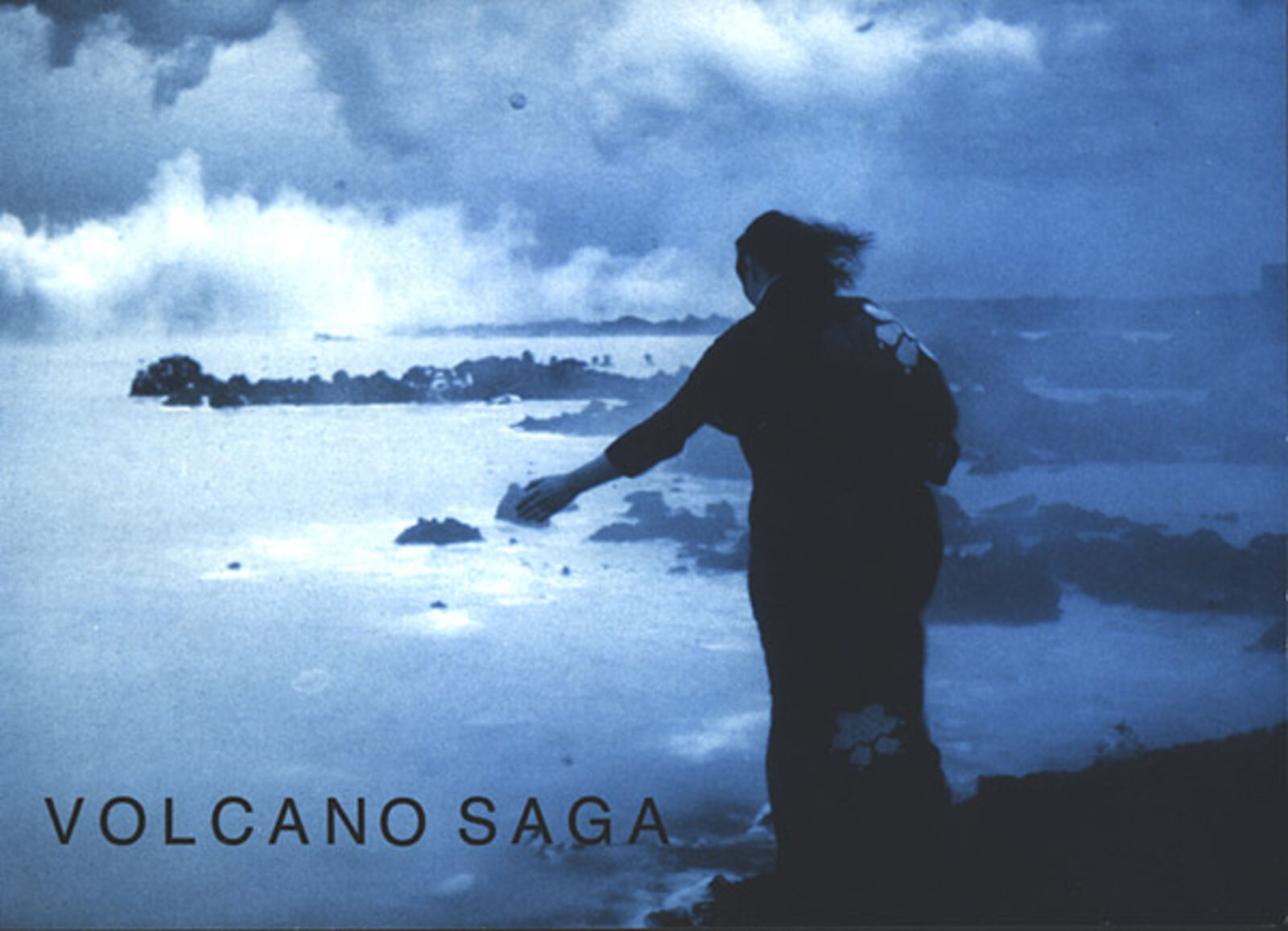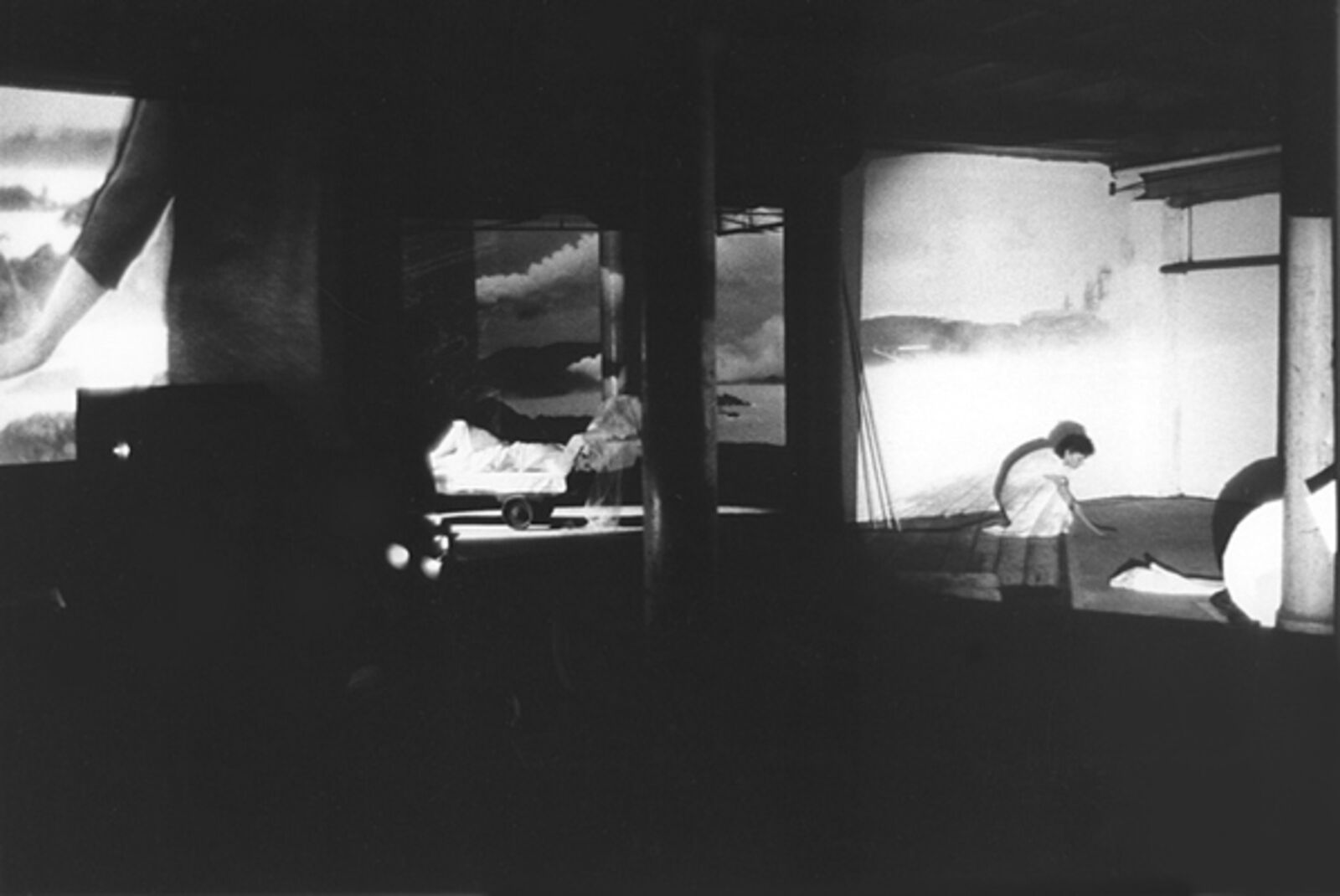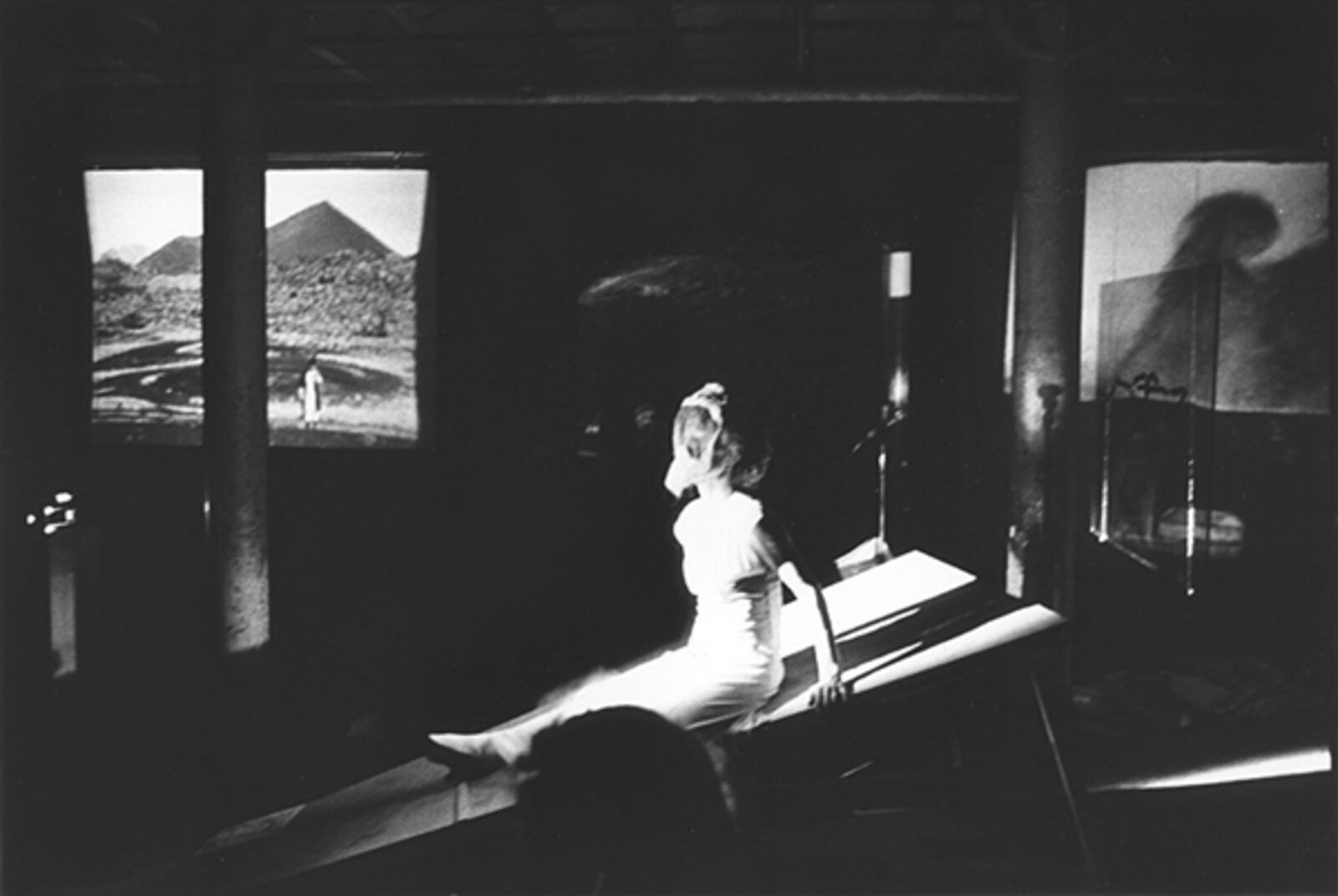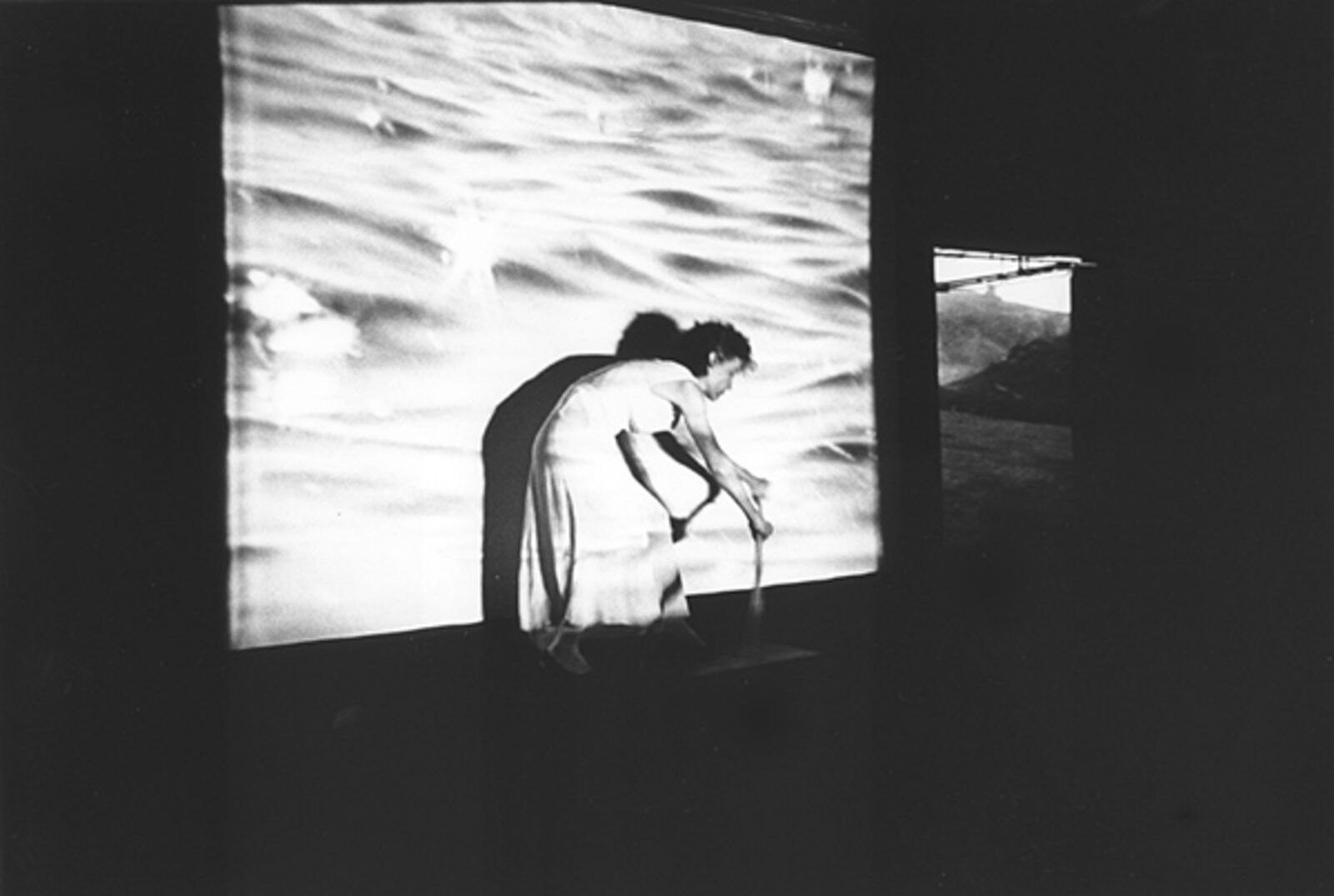Joan Jonas "Volcano Saga"
20–22.12.1985
CERES, Nieuwe Prinsengracht 57, Amsterdam
CERES, Nieuwe Prinsengracht 57, Amsterdam

Invitation

Volcano Saga I
© Ben van Duin, Amsterdam
© Ben van Duin, Amsterdam

Volcano Saga II
© Ben van Duin, Amsterdam
© Ben van Duin, Amsterdam

Volcano Saga III
© Ben van Duin, Amsterdam
© Ben van Duin, Amsterdam
Joan Jonas, performance Volcano Saga, with music by Alvin Lucier.
Location: CERES-building, Nieuwe Prinsengracht 57, Amsterdam.
‘It was the sharp transparent blue of the vast skies curtailed now and then by sharp-contoured hill-tops and a landscape which is capricious, sometimes arcadian and sometimes refractory that formed the strongest memories of a stay on Iceland on which Joan Jonas based her performance Volcano Saga (December 1985). She projects slides on the walls of a space and a videotape on a big screen in the Ceres building in Amsterdam. The visitors stand in front of the only wall that remains unilluminated. This technically complex multi-screen event takes place across all the other walls and includes the pillars. A small adjoining space has also been included so that spectators see themselves situated in front of a series of vistas. In this decor, Joan Jonas not only reports the natural beauty of the northern land but also refers to the medieval history which is so tangibly present in Iceland. The connection which Jonas feels for this land was perpetuated by an accident which happened to her there when she was blown off the road in her car. This event is mentioned by Jonas in the piece. (...)
Various sagas were written in Iceland during the Middle Ages. They are records of the families who came from Norway and established themselves in Iceland in around the 9th century. What at the time was handed down for two centuries by word of mouth was recorded in these chronicles. Fragments of the most well-known saga, the Laxdaela Saga, form part of Joan Jonas' texts which she recites into a microphone. The four remarkable dreams of Gudrun Osvif’s daughter, in particular, are of great significance, in the saga as well as in Jonas' adaptation. The dreams contain the prediction of what is going to happen to the four successive husbands of Gudrun. These dreams are not only recited but also made visual. Thus, a headdress appears in the first dream which Gudrun thinks doesn’t suit her. She throws the hat into the water: a metaphor for the man she is discarding because he no longer pleases her. Jonas, too, wears a shawl over her head which calls attention to by moving and dancing with it. Eventually, she slides, her head first down, a sloping table. She throws the shawl away and the spectators see how in the film (there is one film image amongst the stills) it is carried away in fast-flowing water, passes rapids and waterfalls and disappears from view.
At some points, Jonas' plastic symbolism is not convincing. Upon entry, the public is admitted to a side-room in which there is a simmering pot on a gas stove. For me, the sight of Jonas thin figure in a white 'Friends of the Earth-style' dress stirring a 'magic potion’ had associations with witchcraft and not, as probably was intended, with the steaming geyzers in the Icelandic landscape. Also the presence of the young lovers was superfluous (they had been selected, amongst others, and had no theatrical experience at all). It is rather naive to assume that their unprofessionalism would automatically give the impression of an unspoiled naturalness, supposing, at least, that that was the point. Like extras, they diverted attention rather than enhanced it. On the other hand, what made me enthusiastic were the moments when Jonas isolated details from the background by holding up a sheet of white paper at a carefully selected spot a few metres in front of the projection on the wall. Like a mirage, an unforgettably beautiful white lighthouse was caught in mid-air. The same happened with the homed heads of sheep. Moreover, through crumpling up paper into a ball, added a plastic suggestion of three-dimensionality. Drawing as an action in itself is, for Jonas, a way in which she influences imagery and seems to want to allay the transitoriness of the slide. When the story gives occasion she (for instance) sketches the seals in the projected water at breakneck speed or follows the contours of the slide on paper. Another surprising moment is when she literally rows against a background of moving water. All these actions are stimuli to give the spectator food for thought for considering the immaterial images whose temporary result is a beam of light. Despite her inclination towards total theatre which generally turns out well in Volcano Saga, Joan Jonas proves herself to be primarily a visual artist who not only shows the most beautiful images but also provokes questions about the illusion of seeing them.’
(Tineke Reijnders, ‘A mirage. Joan Jonas’ performance Volcano Saga’, De Appel 6 (1986) 1, p. 25.)